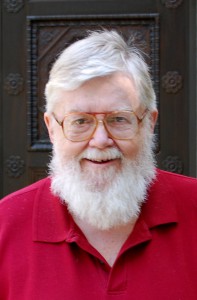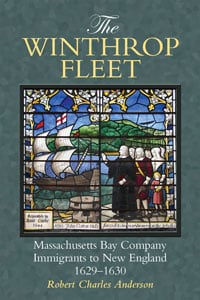The Massachusetts Bay Company arranged for six vessels to sail for New England in 1629, only five of which reached their destination. The salient details for each of these sailings are summarized below:
George Bonaventure, Thomas Cox, master. She left the Isle of Wight 4 May 1629, and probably reached Salem during the first half of July. Samuel Sharp and the Rev. Samuel Skelton were two of the passengers.
Talbot, Thomas Beecher, master. This ship left London 25 April and the Isle of Wight 11 May, arriving at Cape Ann 27 June and Salem 29 June 1629. The Rev. Francis Higginson was one of the passengers.
Lyon’s Whelp, John Gibbs, master. The Lyon’s Whelp sailed with the Talbot; the Rev. Francis Bright was a passenger.
Mayflower, William Peirce, master. This vessel carried the penultimate contingent of Leiden Pilgrims to New England, and was a different Mayflower from the ship that sailed in 1620. William Bradford reported that it sailed “in May and arrived here about August.”
Four Sisters, Roger Harman, master. She carried “many cattle with passengers & provision.”
Pilgrim, William Woolrige, master. This ship sailed in August but “was seized off Canada by Captain Daniell of Dieppe who stripped her of her lading. On 31 October 1629 as she was returning to England she ran into foul weather off the Scilly isles and her masts and sails were cut down to save her.” The number of passengers on the Pilgrim is not known.
1630
At least eighteen vessels carrying passengers sailed from England for New England in 1630, not all of which were part of the Winthrop fleet. The Arbella is probably the most famous of this group, which sailed in late March from Cowes. John Winthrop recorded the arrival in Salem of four vessels which had set out together in late March: Arbella (on 12 June), Ambrose (13 June), Jewel (19 June), and Talbot (2 July). Seven other ships arrived during the course of the first week of July: Mayflower and Whale (1 July), Hopewell and William & Francis (3 July), Trial and Charles (5 July), and Success (6 July). Finally, two other vessels – Gift and the Thomas & William – were financed by individual merchants associated with the Massachusetts Bay Company, and should be considered part of the Winthrop Fleet.
So, too, perhaps, should the Handmaid, which arrived at Plymouth on 29 October with sixty passengers. One of the passengers on this vessel was John Eddy of Boxted, Essex, whose affiliations place him within the Massachusetts Bay Company’s orbit; this ship may have been the latest arrival of the Winthrop Fleet. Additional information on the merchant or financier behind this voyage would be useful.
Adapted from the introduction to The Winthrop Fleet.
Share this:

About Robert Charles Anderson
Robert Charles Anderson, Director of the Great Migration Study Project, was educated as a biochemist and served in the United States Army in electronics intelligence. In 1972 he discovered his early New England ancestry and thereafter devoted his time and energies to genealogical research. He published his first genealogical article in 1976, and about the same time began to plan for what eventually became the Great Migration Study Project. In 1983 he received a Master’s degree in colonial American History from the University of Massachusetts at Amherst. Anderson was elected a Fellow of the American Society of Genealogists in 1978 and has served as Secretary and President of that organization. He became a Contributing Editor of The American Genealogist in 1979, Associate Editor in 1985 and Coeditor in 1993. He has been an editorial consultant to the New England Historical and Genealogical Register since 1989.View all posts by Robert Charles Anderson →
